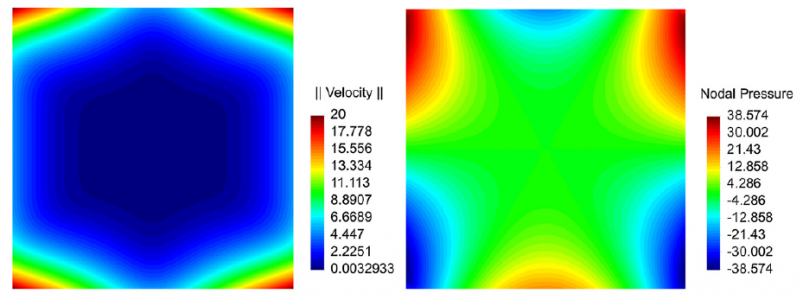
Maximum-entropy meshfree method for incompressible media problems
- Post by: alejandro
- November 25, 2013
- Comments off
Finite Elements in Analysis and Design
Vol. 47, No. 6, pp. 572-585, 2011
A. Ortiz , M.A. Puso, N. Sukumar
Abstract
A novel maximum-entropy meshfree method that we recently introduced in Ortiz et al. (2010) [1] is extended to Stokes flow in two dimensions and to three-dimensional incompressible linear elasticity. The numerical procedure is aimed to remedy two outstanding issues in meshfree methods: the development of an optimal and stable formulation for incompressible media, and an accurate cell-based numerical integration scheme to compute the weak form integrals. On using the incompressibility constraint of the standard u-p formulation, a u-based formulation is devised by nodally averaging the hydrostatic pressure around the nodes. A modified Gauss quadrature scheme is employed, which results in a correction to the stiffness matrix that alleviates integration errors in meshfree methods, and satisfies the patch test to machine accuracy. The robustness and versatility of the maximum-entropy meshfree method is demonstrated in three-dimensional computations using tetrahedral background meshes for integration. The meshfree formulation delivers optimal rates of convergence in the energy and L2-norms. Inf–sup tests are presented to demonstrate the stability of the maximum-entropy meshfree formulation for incompressible media problems.
Original Journal Article: http://dx.doi.org/10.1016/j.finel.2010.12.009
NOTICE: this is the author’s version of a work that was accepted for publication. Changes resulting from the publishing process, such as peer review, editing, corrections, structural formatting, and other quality control mechanisms may not be reflected in this document.
